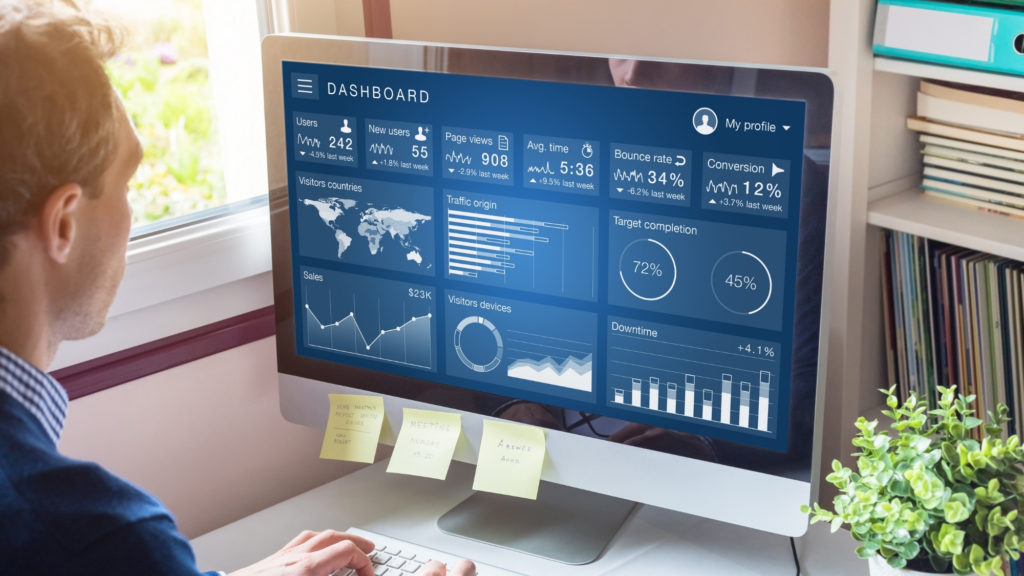April 2, 2021
The definition of analytics is examining data sets to draw conclusions about the information they contain.
The ability to customize ad content based on demographic information collected by the network is crucial for many ad providers. So crucial to the point that they are willing to pay a premium for the opportunity to advertise in your environment. This is a way not just to monetize your Wi-Fi network, but also a way to make it a profit center.
We’ve all experienced the moment when you walk into a restaurant, arena, or almost any other venue and are served up the opportunity for free Wi-Fi if, and only if, we provide our email address or fill out a brief survey to get on the network. Many of us have figured out a workaround to avoid inboxes full of spam emails from this scenario. Providing a fake email address is a big one. But, just for a moment, imagine you’re a parent with two kids, two tablets, and a real desire to eat dinner in peace or to watch the game with relative attention. You would be willing to answer a few questions about clothing preferences or perhaps your favorite wine or beer. Seems simple, right? It is.
For you providing that network, the data collection is critical to monetization. Demographic data is king in the analytics world. In the very near future, it won’t be an option for many ad providers, it will be a must-have when they consider ad placement and creating yearly ad-spend strategies.
Key Considerations for Deploying an Analytics Platform

So, analytics… was as a network owner/operator, should I be thinking about when pondering the deployment of an analytics platform? Here are a few things to consider:
Initial Interaction
Initial interaction with a user that arrives on your network is key. You want to know as much about them as possible. You’ll need to find ways to get them to “opt-in” and give you information about themselves. Age demographic, gender, and simple preferences like favorite team or where they are from are innocuous enough. The goal is not to scare them off to their cellular data plan. Think unobtrusive. Make it personal, but not too personal. Keep in mind that even this simple data is valuable to ad providers. They can customize content based off any of the categories we discussed above. Don’t underestimate the quality and importance of the data, and don’t be shy to make the initial investment yourself. Give away swag, freebies, coupons for free beer, or whatever. Call it a loss leader. Lose a bit up front to make a fortune later. Establish best practices around initial contact, learn what incents some to opt in and what doesn’t, collect the data, use it to model your ad pricing, and use that initial up-front investment to show advertisers what you can do.
Footfall and Dwell Times
What the heck is a footfall, and why does dwell time matter? Do you know those 30-second commercials that air during the Super Bowl? The ones that cost $5M? That’s why dwell times matter. Those ad providers know with almost 100% certainty that you are going to see what they want you to see. It’s a supersized version of the end cap at your local grocery store. The simple fact is that having intimate knowledge of those who access your network to the level of where they go and how long they stay there is an extremely valuable tool when it comes to selling ad space in your venue. Most analytics platforms today can collect this data, but not all can collect it unless the users opt into the network. Use caution and be sure the platform you select, like Connectivity Wireless’ ConnectLytix, can collect data from EVERY device that associates with your network.
The Data Never Dies
Once you’ve got it and it’s nicely ingested by your CRM, you can use it to your favor in multiple areas. We’ll expand on each of these points later, but think about repositioning sign assets in your venue to maximize viewing opportunities. Think about allocating network resources in a manner rooted in real-time usage and network traffic data. Think about the value of your demographic data when it comes to targeted content developed by your potential advertisers. The more you know, the better partner you become, the more value you create for an advertiser, and the more you can charge for your ad space.
Analytics Monetization
You want ROI from your investment, but remember you want to create a partnership as a trusted advisor with your advertisers first. Get the data collection in place, get your potential advertisers excited by showing them what you’re capable of, and then start talking dollars. Monetization can start from the first moment of contact until the last user departs your environment.
Now that you’ve deployed this analytics platform, what’s next?
How to Maximize Analytics

With the correct analytics platform, you’ll go from zero data to mountains of data IN REAL TIME with the massive ability to use your data to stop users, customers, and advertisers in their tracks. Your biggest challenge will be, “How do I make money?” Here are a few tips and tricks for maximizing your new analytic capability:
Interact early and often
Utilize tools to make a quick impression through dynamic splash pages, interactive captive portal pages, and social media sign-in options. Get to your user with incentives as early and as often as you can. Remember, your goal is to be the trusted advisor and partner to your ad providers. To get there, you’ll need to maximize your ability to collect data and disseminate it into usable information. Leverage tools to build those unobtrusive surveys. Do the first month on your own to collect the data that will be necessary to attract big ad dollars. Learn best practices through trial and error when no one is looking.
You don’t actually need a device to log in to gain insight, push content, and collect data
Every device that comes into range is associated with the network regardless of opt-in. Use that fact and the push capability of your platform (most all should have this feature) to offer up pre-login splash pages with rotating content so your guests won’t have to log in to get deals, coupons, etc. Think page views, click-throughs, and impressions here. There is major value in that for advertisers.
Remember, it’s all about eyes on pages, AND while you’re serving up content pre-login, you’re collecting footfall and dwell times. The ability to juxtapose footfall and dwell time against click-through and page views affords you the capability to match guest flow data to sales conversion, gives you better insight into display asset positioning in your venue, and enables you to increase operational efficiency.
There is no wrong way to deploy your platform
Trial and error is the name of the game. Plan to start with guest flow patterns using the heat map and footfall capabilities of your platform. Once you have enough empirical data on flow, then begin positioning display assets around your venue. Begin experimenting with pushing content to devices associated with your network by leveraging ad tools, splash page features, and robust captive portal capabilities. Once you understand flow patterns, you can start optimizing your network to address any weak spots you might have and begin bolstering areas where you plan to have more congregation time due to strategically placed signage.
It’s clear that in our world today, given the global challenges of the last year with COVID-19, having as much insight into your environment is more important than ever. Your guests expect you to consider their safety when attending an event, dining, or simply having a beer. The real-time flow and dwell time stats collected by your analytics platform can afford you the opportunity to take into account social distancing requirements and allow you to physically partition your venue to ensure your guests are protected and that you adhere to local government guidelines. The possibilities that can be recognized by a strong analytics platform are almost limitless. Whether your priorities are to provide robust Wi-Fi access, build a revenue stream through third-party ad dollars, or ensure the safety of your guests, network analytics are not just important. In a changing world, they are nearly mandatory.
